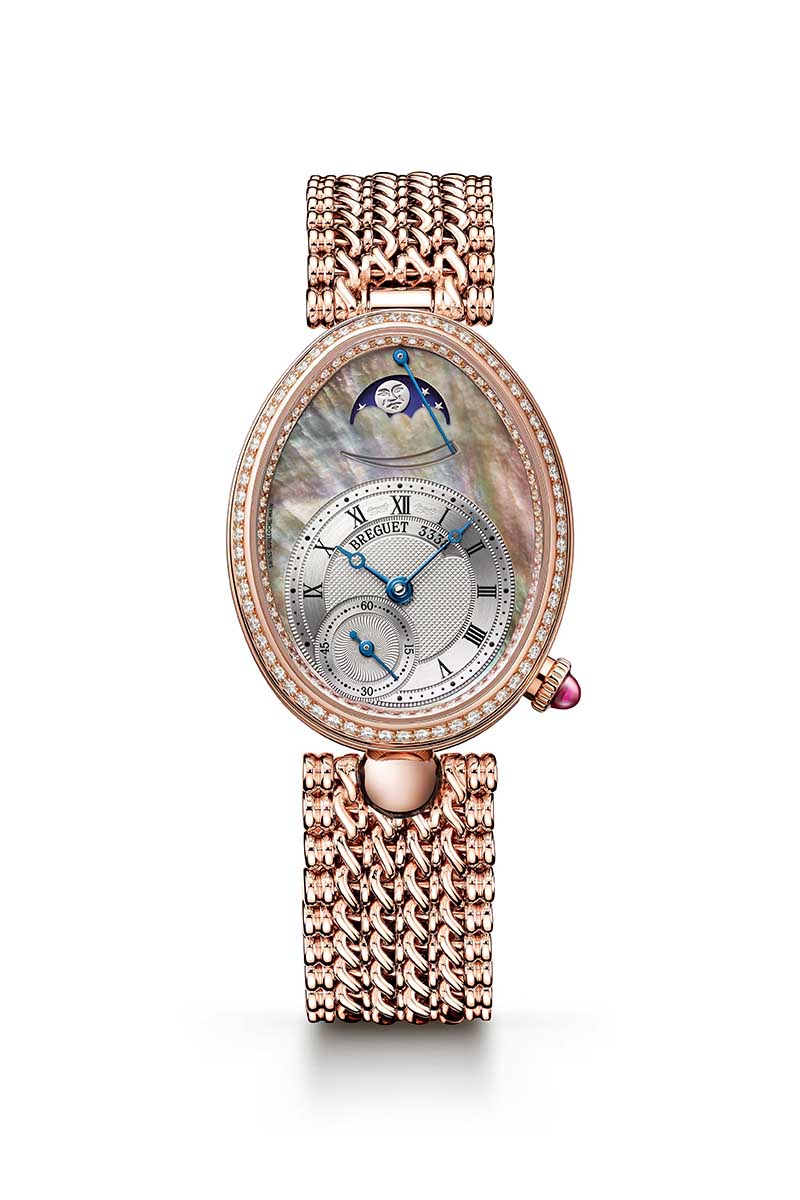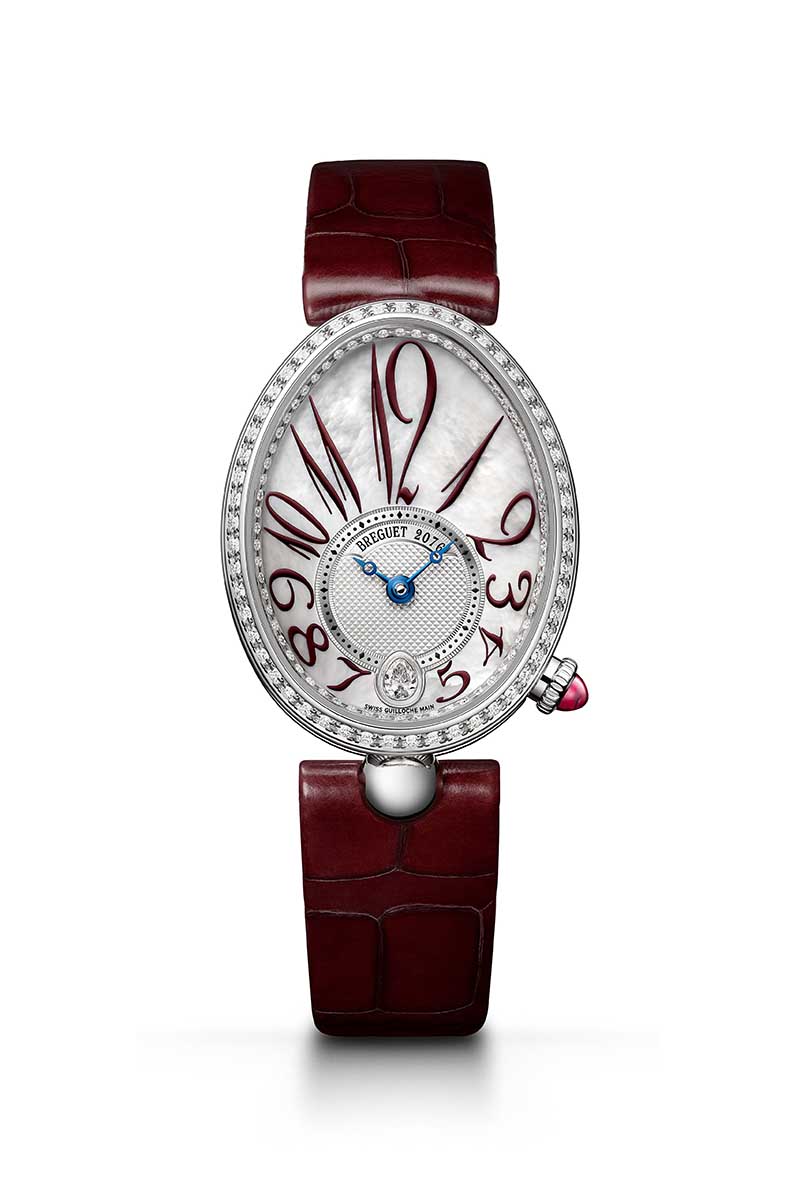A symbol of feminine refinement, the Breguet Reine de Naples was born with royal blood and is, even today, one of Breguet’s bestsellers, revisited by the Maison in different declinations, in an elegant symbiosis between watch and jewelry.
The iconic Breguet Reine de Naples is one of the historic models of Maison Breguet, whose history began more than two centuries ago. It all started when, in 1810, the Queen of Naples and sister of Napoleon Bonaparte, Carolina Murat, placed an order for a wristwatch with Abraham-Louis Breguet. The piece, identified with the number 2639, took two years to be completed and delivered to its illustrious recipient.
Thus, the Breguet Reine de Naples was born, the first wristwatch for a queen (and the first wristwatch in history) to honor the historic gallery of Breguet, along with other orders for the prestigious watchmaker by illustrious personalities such as Queen Marie Antoinette or Empress Josephine.








Unfortunately, the trace of this Reine de Naples has been lost and there is no reference to date in private or public collections. The last known record is from 1855, when the watch was sent to Breguet workshops for repair. However, thanks to the brand’s archives, it was possible to recover this valuable heritage memory, based on the registration of all the pieces that Abraham-Louis Breguet took care to bequeath to posterity.
Luckily, Breguet watchmakers discovered the technical description of a thin, oblong watch, equipped with a minute-repeater complication, with a thermometer, and adorned with a bracelet made of hair and gold, intended to be placed around the wrist. It was from the notes of the famous watchmaker that Maison Breguet reinterpreted the historic watch to create an exclusively women’s collection, enriched with mechanical complications.








Thus began the Queen of Naples collection, launched in 2002 and with developments until today. This is an autonomous collection, as it does not correspond to a version of a male model, but has its own concept and development. It is, therefore, a collection full of past, exclusive to a female clientele who appreciate watchmaking pieces.


